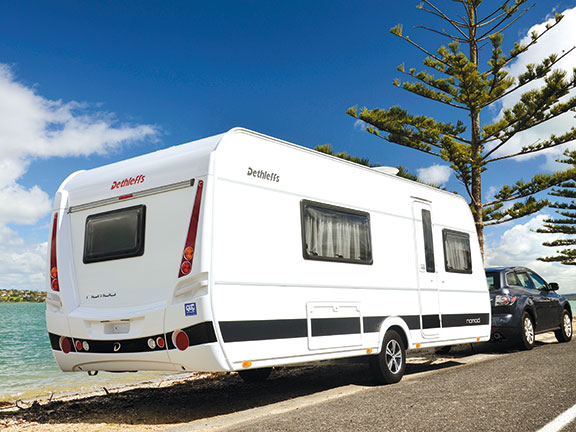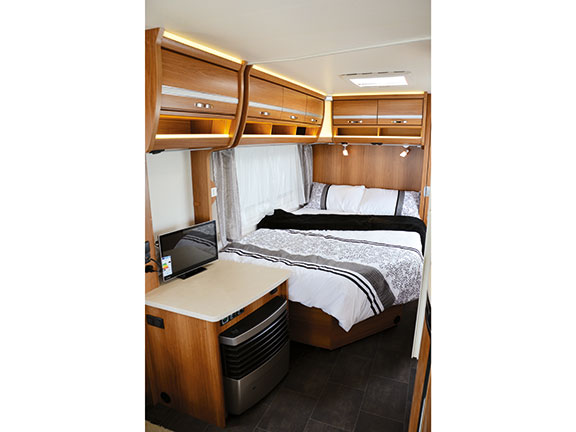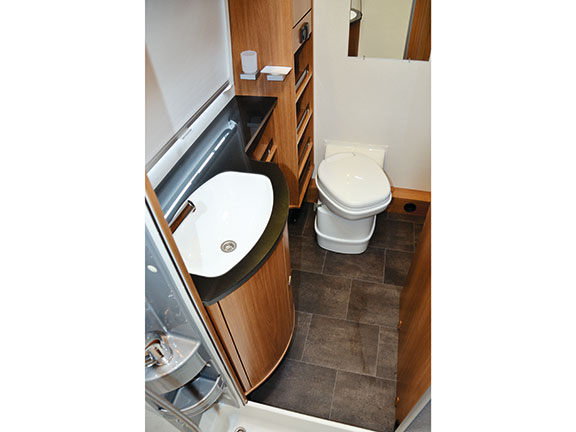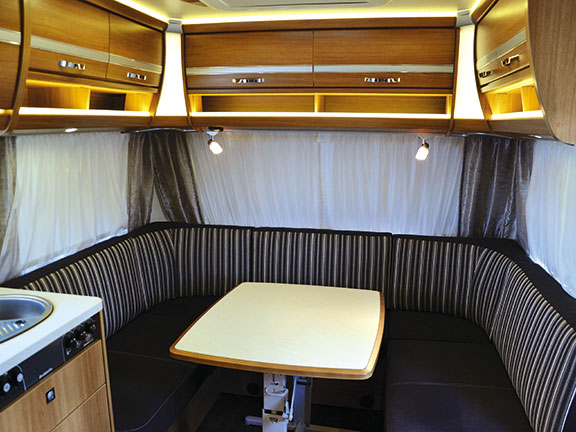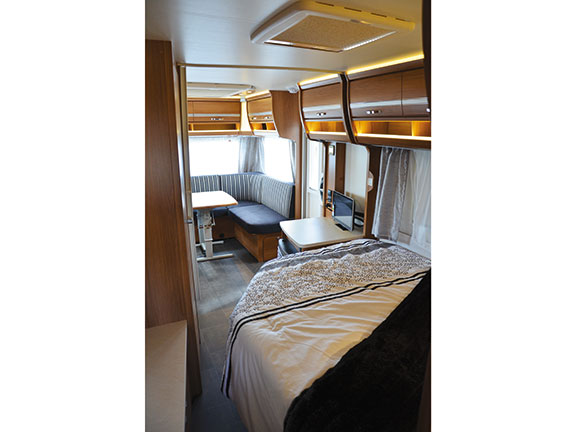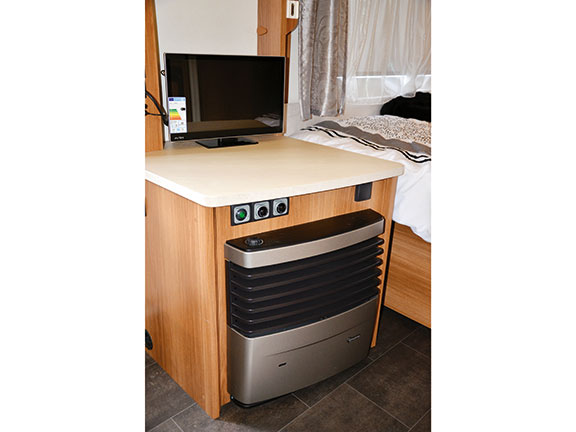Until Howick's Acacia Motorhomes began importing Dethleffs two years ago, the motorhomes' New Zealand presence was virtually non-existent. Based on sales since then, it's clear the brand has become very popular — largely attributable to robust construction, great design and quality finishes, though a stronger New Zealand dollar/weaker Euro has obviously helped.
The manufacturer's caravan range will reinforce this legacy. The first recent arrival on our shores is the four-berth Nomad 540 RFT.
With an overall length (including towbar) of 7.88m, it sits about midway in the 22-caravan Nomad stable.
Largest is the twin-axle flagship 760 (a four-berth penthouse with an overall length of 9.42m). Smallest is the three-berth 450 (6.49m overall), though there is also a smaller model in a different range (the 6.35m, three-berth Camper 390). A multitude of layout variations is available within each model.
Echoing contemporary European design trends, the 540 features clean, uncluttered lines, an aerodynamically-contoured front end, and large windows. Despite the exemplary thermal properties, construction is fairly lightweight — in factory trim the caravan weighs in at around 1310kg, with a 190kg payload.
It rides on a single axle with electronic braking, and AL-KO's legendary stabiliser coupling (with spring-loaded friction pads acting against the towball to restrict swaying and snaking) is fitted as standard. We hitched the 540 to a 2.5-litre Mazda CX7 which purred along without raising a sweat. Admittedly, the caravan was relatively unladen — but it ran smooth and sure-footed on a fairly blustery day.
I don't think it's too much of an issue, but some may be a little nervous about the main entrance door being on the driver's side (confirming the caravan's European origins). Perhaps it's best to make sure the rig is well off the road before stopping to make a quick cuppa.
Accommodation
Inside, it's pure Dethleffs — elegant and stylish but logical and pragmatic. It has a nicely-balanced palette featuring lots of natural light, rich timber, an off-white ceiling, dark blue upholstery, chrome fittings, slim-line handles — and discreet, recessed LED lighting in abundance. I particularly like the light fittings in the dinette/lounge, mounted on tracks and able to be shifted to suit your seating preferences precisely.
With its fixed bed near the rear and large dinette up front, the 540 is ideal for a couple. But it also caters to small families. The dinette's table — centrally positioned within a spacious, U-shaped settee — folds down to form a second double bed.
That table happens to be my favourite piece of design on the caravan. It's freestanding (and as such is ideal for al fresco dining) but when in the dinette it's held in position by a floor clamp. Its real genius is the scissor mechanism that lowers the table to bed-height with a single pull on a lever — neat, quick and fuss-free.
The 540's internal length measures 6.50m and a variety of layout options is available. This model has the bed against the far side, and while it's a decent size (205cm x 135cm), the foot end is tapered to facilitate entry to the bathroom.
A full-width model, the bathroom nestles right at the back of the caravan — well-appointed and spacious with the shower and swivel toilet separated by a vanity. Large mirrors and subtle lighting will have you looking your best.
The 540's layout options include an island bed, and while I prefer it to the tapered model, it would see the bed moved all the way back and a (smaller) bathroom shifted forward to the centre of the caravan. I prefer the bigger bathroom at the back. Can't have everything, I guess.
A modestly-sized kitchen area sits midway along the caravan. It's equipped with fold-down covers over the gas hob (three burners) and sink, offering a decent balance between working and cooking/washing up areas. Below is a 96-litre fridge, 11 litres of which is dedicated to a freezer. Drawers are fitted with a soft-close system, and sigh quietly into position — all very classy.
Winter touring is definitely on the cards. The caravan is fitted with a large Truma heater with ducting reticulated throughout (including the bathroom). Above it is a free-standing 19" LED TV. As a free-standing unit, it's easily swivelled from lounge viewing mode to popcorn-in-bed viewing mode — I much prefer this to the bulkhead-mounted units.
Another excellent piece of design is the caravan's front locker. Like the dinette table, it has a clever mechanism that sees the locker lift out and up, rather than swinging open on hinges. This removes the possibility of the cover crashing down on your head. Inside it's vast — it will easily accommodate two 9kg gas bottles and lot more besides.
In Europe the caravans are equipped with limited battery capacity because owners tend to overnight in motorcamps with plug-in electricity. To cater for our market, where owners lean to freedom camping, the agent has equipped with 540 with a 100amp/h, deep-cycle AGM battery.
Appropriate on-board electrics see the battery charged by the tow-vehicle's alternator, but to help with charging duties he has also fitted a 195-watt solar panel to the roof. Together with the other extras (the Avtex 19" LED TV and Winegard satellite dish), the solar panel lifts the 540's base price from $55,000 to $57,500.
The Nomad 540 is a stylish, sophisticated caravan, but doesn't compromise homely comfort. If you want to check it out first-hand and you happen to be in Canterbury, visit the Christchurch show (8 – 10 November) where it will be on display. Don't forget to play with the cool, fold-down table mechanism.
For more information contact Jonas at Acacia Motorhomes on 0800 112 828.
For the latest reviews, subscribe to our Motorhomes, Caravans & Destinations magazine here.

